How SEO Ranking Factors Are Changing – Latest Research at #SMX Advanced was originally published on BruceClay.com, home of expert search engine optimization tips.
SMX Advanced 2016 is off to a great start! The session titled “The Periodic Table of SEO Ranking Factors: 2016 Edition” assembles SEO leaders sharing their research findings on how search results are being impacted by new technology. On stage, Marcus Tober, Eric Enge and Leslie To are diving straight into the most important search ranking factors driving SEO right now.
The Periodic Table of SEO Ranking Factors – Marcus Tober
Marcus Tober (@marcustober), the founder and CTO of Searchmetrics, is in from Berlin. He tells us that, in a nutshell, search engines like Google are trying to filter out all the crap and traditional ranking factors are dead.
Is SEO dead, too? When Google rolled out Panda and then switched to HTTPS, all the people screamed SEO is dead and now we need to be creative. But if you search and there are results, there is still something to reverse engineer.
“If you search & there are results, there is still something to reverse engineer.” @marcustober…
Click To Tweet
Good SEO vs. Bad SEO
Bad SEO:
1 keyword = 1 landing page
+ SEO checklist
- Keyword in domain
- Keyword in title
- Keyword in H1
- Adlinks
- 300 words
- Links
Good SEO:
1 topic = 1 landing page
+ Content checklist
- Content quality
- User intention
- Content experience
Desktop Search 2015 vs. 2016
Tober looked for the keyword in the title tag on more than 30,000 top-ranking pages. In 2015, 75% had it. In 2016 only 55% had it. Hummingbird and RankBrain are responsible for this.
He found 7% less usage of H1 tags. But keywords in H1 tags are down by 10%.
There is a legend that if you have longer content, you will have better rankings. However, in 2016 the top pages had an average of 1,633 words. In 2015, the average page had 1,285.
As for internal links on the page, in 2015 he saw average internal links of 150. In 2016, it was 126. This is the first time this number has decreased YOY in Tober’s studies.
More on Why SEO is Not Dead
92% of business purchases start with search. 81% of shoppers research online before buying.
Traditional ranking factors are going to fail thanks to Google RankBrain, which is constantly evolving. RankBrain brings:
- Stronger impact of soft factors (soft signals, content relevance)
- Improved assimilation of user intuition
- Deep learning that solves more complex problems that operates on multiple levels
We must analyze industry by industry for intention. Each industry has to deal with different search intentions. If the industry is health, the searcher is interested in the most valid information. In another industry, however, the searcher is looking for the best offer.
If you search for “security camera system,” 10 out of 10 search engine Page 1 results have an add-to-cart button above the fold. This is a dynamic relevance factor. However, if you search for “security system,” only 3 out of 10 results have shopping carts. Other results are for vendors (but without shopping carts), and the last four just give information.
Deconstructing the Gospel of Rankings – Leslie To
 Leslie To (@itsleslieto), the director of SEO at 3Q Digital, quotes Heraclitus: “Change is the only constant.” To holds that no quote better describes the SEO industry.
Leslie To (@itsleslieto), the director of SEO at 3Q Digital, quotes Heraclitus: “Change is the only constant.” To holds that no quote better describes the SEO industry.
Why, then, do so many SEO projects focus on meta data and body copy optimization? These things still matter, but how much do they matter?
- How much does exact match keyword targeting matter in title tags?
- CTR is related to meta descriptions and has been thought to impact rankings. Does it really?
- Is there a diminishing return on content investment?
Based on To’s research, pages between 500 and 600 words had the best rankings. However, this varies by industry. You should study how many words your pages have and how that relates to their ranking in order to find your own sweet spot.
Exact Match Titles vs. Phrase Match Titles
We can’t write title tags based on an exact keyword — it has to be about keyword themes and focus on the goal of the page and finding the theme that encompasses it. URLs with phrase match often ranked better, according to her research.
CTR As It Relates to Meta Descriptions
After adding meta descriptions to 1,500 pages, To tracked them over time. After the initial release, the CTR soared. There was a .33% increase in CTR, BUT a –.29 change (drop) in average position.
Understanding RankBrain
- RankBrain is getting better every day, but it’s still not there. As RankBrain gets better at interpreting searches, the pool of keyword permutations will slowly shrink.
- Because of this, you’ll also have to get better at figuring out implied meanings of keyword searches in order to take advantage of RankBrain’s conflating abilities.
- Even though it’s the third most important ranking factor, it’s unclear how we can optimize for it.
Eric Enge: What’s Hot in SEO Ranking Factors
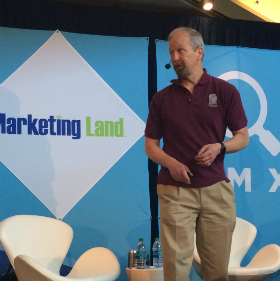 Eric Enge (@stonetemple) is the CEO of Stone Temple Consulting.
Eric Enge (@stonetemple) is the CEO of Stone Temple Consulting.
Featured Snippets
Enge has been tracking Google’s use of featured snippets, reviewing 855,000 SERPs. Google appears to have built a featured snippet machine. Enge speculates that Google is:
- Scanning sites to find possible featured snippets
- Seeing if results are below a threshold
- Selecting a site to test with a featured snippet
- Measuring overall search metrics
Does getting a featured snippet increase traffic?
In some tests, traffic doubles to sites with featured snippets. Stone Temple published five videos in May 2015 with transcripts of clear steps in them. After they submitted the URLS to Google Search Console, two-fifths of the videos earned featured snippets!
RankBrain
Enge explains basically what Google’s RankBrain does, with the result that it improves the search engine’s ability to understand natural language and then provide more relevant results.
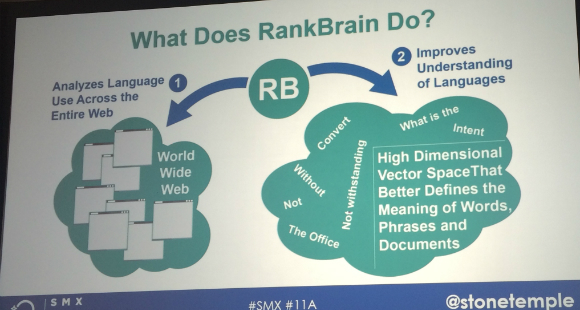
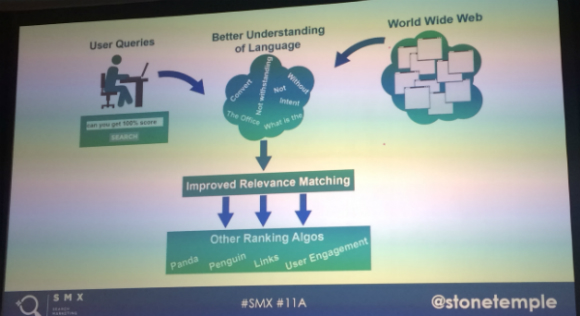
Mobile Update 2
Google’s second mobile-friendliness update, which rolled out in May 2016, was almost a non-event in terms of its impact.
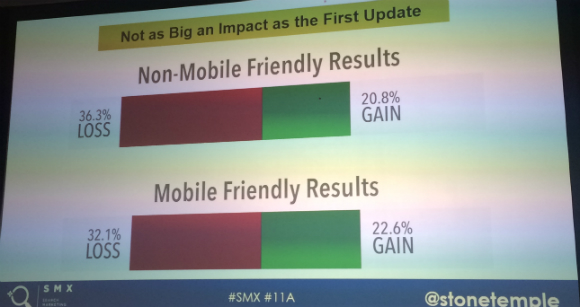
Furthermore, the total percentage of mobile-friendly results only increased by 1% after Update 2.
This update is still important, though. It’s an indicator of Google’s confidence in the concept of a rankings boost. It will likely be followed by more updates. And future mobile ranking updates will include other factors, such as page speed.
Links as a Ranking Factor
In a hangout Enge participated in on March 23, 2016, with several others including Google’s Andrey Lippatsev, the following exchange went down, revealing Google’s continued reliance on links as one of the top two ranking factors.
Ammon Johns: “We’ve heard that RankBrain is the third most important signal contributing to results now. Would it be beneficial to us to know what the first two are?”
Andrey Lippatsev: “Yes, absolutely. I can tell you what they are. It’s content and links going into your site.”
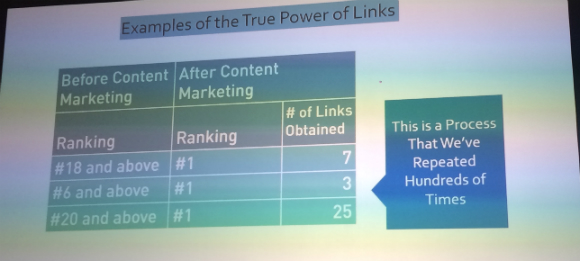


No comments:
Post a Comment